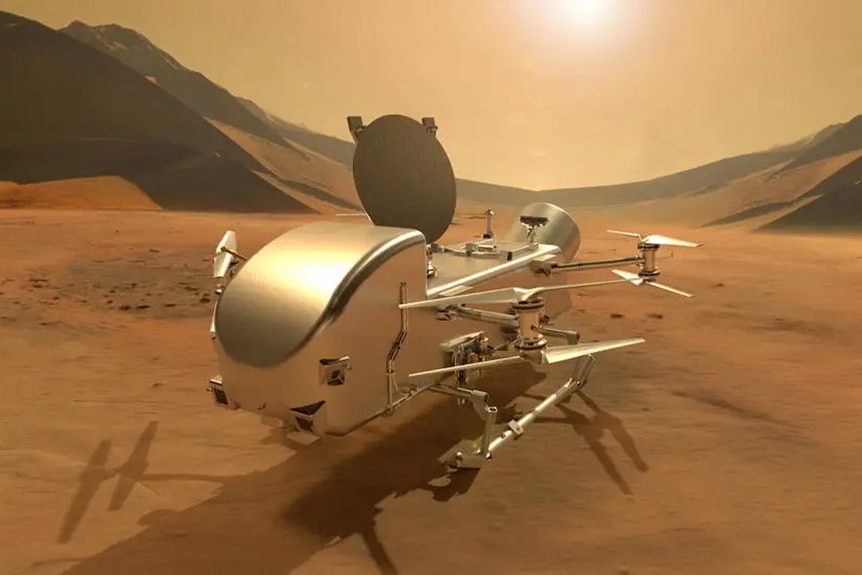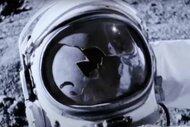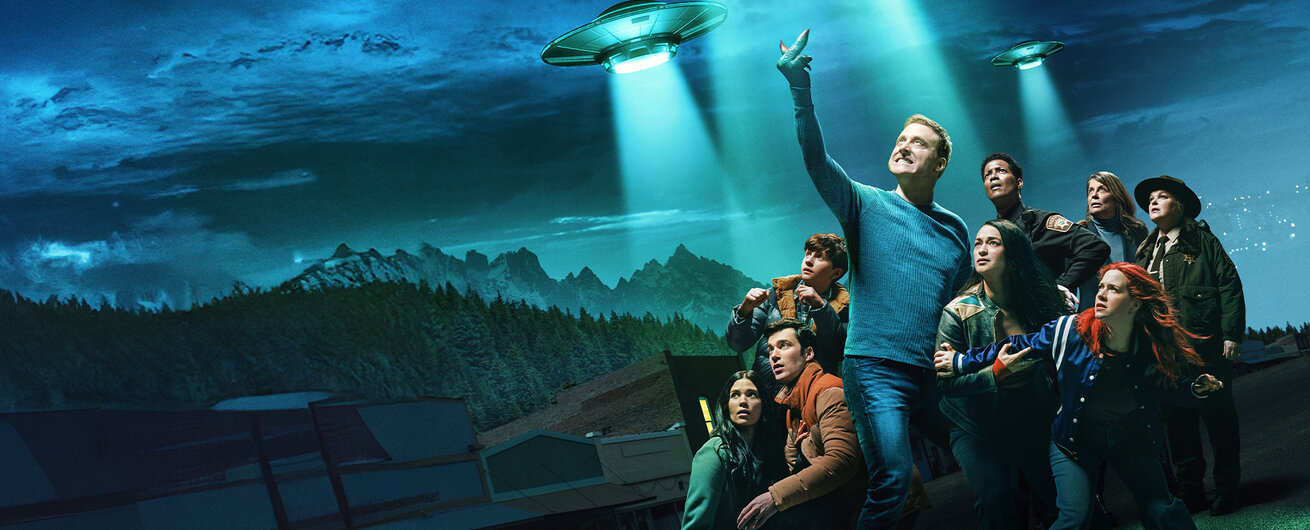Create a free profile to get unlimited access to exclusive videos, sweepstakes, and more!
NASA is sending a Flying Dragonfly Rotorcraft to Explore Saturn's Moon Titan
Dragonfly promises to be the coolest robotic mission in NASA history.
Harry Vanderspeigle (Alan Tudyk) on SYFY's Resident Alien hails from a world entirely alien to our own. There, a family of cephalopod species related to Earth’s own octopuses swim alien seas and send emissaries to annihilate humanity. Not to be outdone, humanity is getting in on the action (minus the annihilation, and firmly entrenched in the real world) by sending a robotic aircraft to Saturn’s moon Titan.
After years trapped in the development doldrums, NASA recently announced that the Dragonfly mission to send a flying rotorcraft to Titan has been approved.
For More on Titan:
JWST Goes Cloud Gazing on Saturn's Moon Titan
Titan Has Geological Features Eerily Similar to Those on Earth
Alien Life on Saturn's Moon Titan Looking Less Likely, At Least Below the Surface
Why NASA Wants to Explore Saturn’s Moon Titan
Titan is the second-largest moon in the entire solar system, second only to Jupiter’s moon Ganymede. It’s so large, larger than Mercury, that it would have been considered a planet in its own right, were it not gravitationally tied to Saturn. In addition to its size, Titan has surface activity more similar to Earth than anywhere else in the solar system.
It’s the only moon in the solar system with a thick atmosphere. In fact, Titan’s atmosphere is so thick that an astronaut on its surface wouldn’t need a pressure suit. As long as you could handle the freezing temperatures of up to -290 Fahrenheit (-179 Celsius), you could stroll along its surface with nothing more than an oxygen mask. The atmosphere is so thick that until recently we didn’t know much about Titan because its surface was shrouded in a thick blanket of clouds.
During your extraterrestrial walk you would see landscapes that look startlingly similar to home. Titan has surface weather including a liquid cycle similar to Earth’s water cycle. It rains on Titan and those rains fill rivers and lakes. That rain, however, is made of liquid methane and ethane, instead of water. Astronomers suspect that there may be a hidden ocean of saltwater hidden beneath Titan’s crust.
In 2005, NASA’s Cassini spacecraft flew through the Saturn system and dropped a probe called Huygens, named for the astronomer who discovered Titan in 1655. It dipped through the Titanic cloud cover and touched down on Titan’s surface, snapping pictures the whole way. Dragonfly would pick up where Huygens left off by visiting Titan with the tools to explore once it gets there.
NASA’s Dragonfly Mission to Saturn’s Moon Titan
Now that the mission is confirmed, the teams involved can move forward with the final design, construction, and testing of the Dragonfly spacecraft and its instruments. Following in the aerial footsteps of the Mars Ingenuity helicopter, the first craft to achieve powered flight on another world, engineers are designing a flying rotorcraft capable of flitting about Titan’s alien air. Titan’s relatively low gravity (about one seventh that of Earth) and thick atmosphere will help Dragonfly stay aloft with relatively little energy cost.
“Dragonfly is a spectacular science mission with broad community interest, and we are excited to take the next steps on this mission. Exploring Titan will push the boundaries of what we can do with rotorcraft outside of Earth,” said Dr. Nicky Fox, NASA’s associate administrator, Science Mission Directorate, in a statement.
Once there, Dragonfly will be plenty busy gathering scientific data. The cherry on top of Titan’s deep space sundae is the complex chemistry it’s cooking up. Scientists believe that Titan’s current conditions mirror those during Earth’s infancy. The goal is for Dragonfly to cover a distance of more than 100 miles over the course of three years, hitting all the hot tourist spots Titan has to offer.
The mission is expected to launch in the summer of 2028 as part of NASA’s New Frontiers program and arrive at Titan in 2034. So far, New Frontiers has launched successful missions including New Horizons which studied Pluto and returned incredible pictures of its surface before heading for the deeper Kuiper Belt; Juno, which is currently exploring Jupiter and its moons; and OSIRIS-REx, which collected and returned a sample from the asteroid Bennu before heading for Apophis as the rechristened OSIRIS-APEX. Dragonfly will be the fourth New Frontiers mission.
Catch all three seasons of Resident Alien streaming now on Peacock.
























